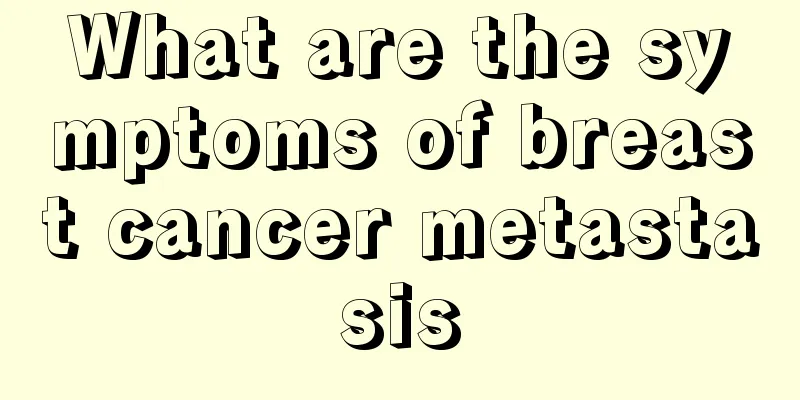What are the examination methods for kidney cancer

|
Kidney cancer, also known as renal cell carcinoma and renal adenocarcinoma, originates from renal tubular epithelial cells and can occur in any part of the renal parenchyma, but is most common in the upper and lower parts, with a few invading the entire kidney; the left and right kidneys have equal chances of developing the disease, and bilateral lesions account for 1% to 2%. For many years, hematuria, pain, and masses have been called the "triad" of kidney cancer. So how much do you know about the examination methods for kidney cancer? Today, our experts will introduce it to you in detail. 1. General examination : Hematuria is an important symptom, and polycythemia often occurs in 3% to 4%; progressive anemia may also occur. In bilateral renal tumors, total renal function usually does not change, and the erythrocyte sedimentation rate increases. Some renal cancer patients do not have bone metastasis, but may have symptoms of hypercalcemia and increased serum calcium levels. After renal cancer resection, the symptoms are quickly relieved and the blood calcium returns to normal. Sometimes it may develop into liver dysfunction, which can return to normal if the tumor kidney is removed. 2. X-ray angiography is the main method for diagnosing renal cancer (1) X-ray films: X-ray films can show that the kidney is enlarged and its contour is changed. Occasionally, there is tumor calcification, which may be localized or widespread flocculent shadows within the tumor. It may also form calcification lines or shells around the tumor. Kidney cancer is more common in young people. (2) Intravenous urography. Intravenous urography is a routine examination method. However, it cannot show tumors that have not yet caused deformation of the renal pelvis and calyces, and it is difficult to distinguish whether the tumor is renal cancer, renal angiomyolipoma, or renal cyst. Therefore, its importance is reduced. Ultrasound or CT examination must be performed at the same time for further identification. However, intravenous urography can understand the function of both kidneys and the condition of the renal pelvis, calyces, ureters, and bladder, which has important reference value for diagnosis. (3) Renal artery angiography: Renal artery angiography can reveal tumors that are not deformed by urinary system angiography. Renal cancer is manifested by new blood vessels, arteriovenous fistulas, pooling of contrast agents, and increased capsular blood vessels. Angiography has great variability, and sometimes renal cancer may not be visualized, such as tumor necrosis, cystic changes, arterial embolism, etc. When necessary, adrenaline can be injected into the renal artery to cause normal blood vessels to contract, but tumor blood vessels will not respond. In relatively large renal cancers, renal artery embolization can also be performed during selective renal artery angiography to reduce bleeding during surgery. Renal artery embolization can be performed as a palliative treatment for patients with renal cancer that cannot be surgically removed and who have severe bleeding. 3. Ultrasound scanning : Ultrasound examination is the simplest and non-invasive examination method and can be used as part of routine physical examination. Any mass in the kidney that is larger than 1 cm can be found by ultrasound scanning. It is important to distinguish whether the mass is renal cancer. Renal cancer is a solid mass. Because it may have bleeding, necrosis, and cystic changes inside, the echo is uneven and generally low-echo. The boundary of renal cancer is not very clear, which is different from renal cysts. Space-occupying lesions in the kidney may cause deformation or rupture of the renal pelvis, calyx, and renal sinus fat. Renal papillary cystadenocarcinoma looks like a cyst on ultrasound examination and may have calcification. When it is difficult to distinguish between renal cancer and cysts, puncture can be performed. Puncture under ultrasound guidance is relatively safe. The puncture fluid can be examined for cytology and cyst contrast. The cyst fluid is usually clear, free of tumor cells, and low in fat. When the cyst wall is smooth during contrast imaging, it can be confirmed that it is a benign lesion. If the puncture fluid is bloody, a tumor should be considered. Tumor cells may be found in the aspirate. When the cyst wall is not smooth during contrast imaging, it can be diagnosed as a malignant tumor. Renal angiomyolipoma is a solid tumor in the kidney. Its ultrasound manifestation is a strong echo of fat tissue, which is easy to distinguish from renal cancer. When renal cancer is found by ultrasound examination, attention should also be paid to whether the tumor has penetrated the capsule and perirenal fat tissue, whether there are enlarged lymph nodes, whether there are cancer thrombi in the renal vein and inferior vena cava, and whether there is liver metastasis. 4. CT scan : CT plays an important role in the diagnosis of renal cancer. It can detect renal cancer that has not caused changes in the renal pelvis and calyx and has no symptoms. It can accurately measure the tumor density and can be performed in outpatient clinics. CT can accurately stage. Some people have calculated its diagnostic accuracy: 91% of invasion of the renal vein, 78% of perirenal spread, 87% of lymph node metastasis, and 96% of involvement of nearby organs. Renal cancer CT examination shows a mass in the renal parenchyma, which can also protrude from the renal parenchyma. The mass is round, quasi-round or lobed, with clear or blurred boundaries. It is a soft tissue mass with uneven density during plain scanning. The CT value is >20Hu, usually between 30 and 50Hu, slightly higher than the normal renal parenchyma, or similar or slightly lower. The internal unevenness is caused by hemorrhage, necrosis or calcification. Sometimes it can be manifested as a cystic CT value, but there are soft tissue nodules on the cyst wall. After intravenous injection of contrast agent, the CT value of normal renal parenchyma reaches about 120Hu, and the CT value of the tumor also increases, but it is significantly lower than the normal renal parenchyma, making the tumor boundary clearer. If the CT value of the mass does not change after enhancement, it may be a cyst. The diagnosis can be confirmed by combining the CT value before and after contrast medium injection as liquid density. In necrotic foci in renal cancer, renal cystadenocarcinoma, and after renal artery embolization, the CT value does not increase after contrast medium injection. Because renal angiomyolipoma contains a large amount of fat, the CT value is often negative and the interior is uneven. After enhancement, the CT value increases, but it still shows fat density. During CT examination, oncocytoma has clear edges and uniform internal density, and the CT value increases significantly after enhancement. CT examination determines the standard of renal cancer invasion. (1) The mass is confined to the renal capsule: The affected kidney has a normal appearance or is locally protruding, or is uniformly enlarged. The protruding surface is smooth or slightly rough. If the mass protrudes into the renal capsule in a nodular manner and has a smooth surface, it is still considered to be confined to the renal capsule. The fat capsule is clear, and there is no irregular thickening of the perirenal fascia. The presence or absence of a fat capsule cannot be used to determine whether the tumor is confined to the renal fascia, especially in thin patients. (2) Confined to the perirenal invasion within the fat capsule: The tumor protrudes and replaces the local normal renal parenchyma, the renal surface is significantly rough, and the renal fascia is irregularly thickened. There are soft tissue nodules with unclear boundaries within the fat capsule, and linear soft tissue shadows are not diagnostic. (3) Venous invasion: The renal vein becomes thickened and bulges locally in a fusiform shape, with uneven density, abnormally increased or decreased, and the density change is the same as that of tumor tissue. The standard for venous thickening is that the diameter of the renal vein is >0.5cm and the diameter of the inferior vena cava in the upper abdomen is >2.7cm. (4) Lymph node invasion: renal pedicle, abdominal aorta, inferior vena cava and the round soft tissue shadows between them. If the density change is not significant after enhancement, it can be considered as lymph node. If it is less than 1 cm, it is not diagnosed. If it is ≥ 1 cm, it is considered as metastatic cancer. (5) Invasion of adjacent organs: The boundary between the tumor and adjacent organs disappears and the shape and density of adjacent organs change. If the fat line between the tumor and adjacent organs disappears, no diagnosis is made. (6) Renal pelvis invasion: The edge of the part of the tumor that enters the renal pelvis is smooth and rounded, forming a half-moon arc and being compressed. When delayed scanning is performed when renal function is good, the edge of the contrast agent in the compressed renal pelvis and calyces is smooth and neat, which is considered to be simple compression of the renal pelvis and calyces. If the renal pelvis and calyces structure disappears or is occluded and completely occupied by the tumor, it indicates that the tumor has penetrated the renal pelvis. 5. Magnetic resonance imaging (MRI): Magnetic resonance imaging is ideal for examining the kidneys. The renal hilum and perirenal fat produce high signal intensity. The outer cortex of the kidney has a high signal intensity, while the middle medulla has a low signal intensity. This may be due to the different osmotic pressures in the renal tissue. The contrast between the two parts differs by 50%. This difference can be reduced with prolonged recovery time and hydration. The renal artery and vein have no intracavitary signals, so they are low intensity. The collecting system has low intensity with urine. The MRI variation of renal cancer is large, which is determined by the tumor blood vessels, size, and the presence or absence of necrosis. MRI cannot detect calcification foci very well because of its low proton density. MRI can easily detect and identify the scope of renal cancer invasion, the surrounding tissue capsule, and changes in the liver, mesentery, and psoas muscles. In particular, renal cancer has tumor thrombi in the renal vein and inferior vena cava and lymph node metastasis. The above is an introduction to the examination methods for kidney cancer. I hope it will be helpful to you. If you have any symptoms of the disease, do not delay diagnosis and go to a regular hospital for treatment in time to avoid delaying the disease and causing serious consequences. If you have other questions, please consult our online experts for detailed answers. Kidney cancer http://www..com.cn/zhongliu/sa/ |
<<: What are the clinical manifestations of kidney cancer
>>: Analysis of the early symptoms of laryngeal cancer
Recommend
Can onions absorb formaldehyde?
We all pay more attention to the decoration of ne...
What to do if my front teeth turn yellow
Everyone wants their teeth to be white and health...
What are the B-ultrasound manifestations of small liver cancer? How to treat small liver cancer effectively?
Small liver cancer is an oncology disease. This d...
What are the symptoms of liver cancer in the early and late stages? Treatment principles for liver cancer staging
Liver cancer is a very harmful disease that has t...
What complications does lymphoma have?
Lymphoma is a highly malignant cancer, which is u...
There is a lump on my arm after getting the vaccination
Basically every baby needs to get vaccinated at c...
Catheter ablation for atrial fibrillation
Atrial fibrillation is actually a heart disease t...
Endometrial cancer stage III recurrence rate
Stage III endometrial cancer is a period that is ...
What is the use of medicinal baking soda?
Baking soda is something we use frequently in our...
What happens if you use too much facial cleanser?
The face is the part of our body that comes into ...
Eugenics and good parenting examination items
Since the implementation of family planning, the ...
What are the functions of Tiantu acupoint?
As we all know, there are many acupoints distribu...
How long can you live with advanced lung cancer? The treatment of advanced lung cancer depends on this
If lung cancer patients experience pain, hoarsene...
Brown spots suddenly appear on the body
Brown spots suddenly appear on your body, which i...
What to do if the aortic root is sclerotic?
What is aortic root sclerosis? Arteriosclerosis i...









